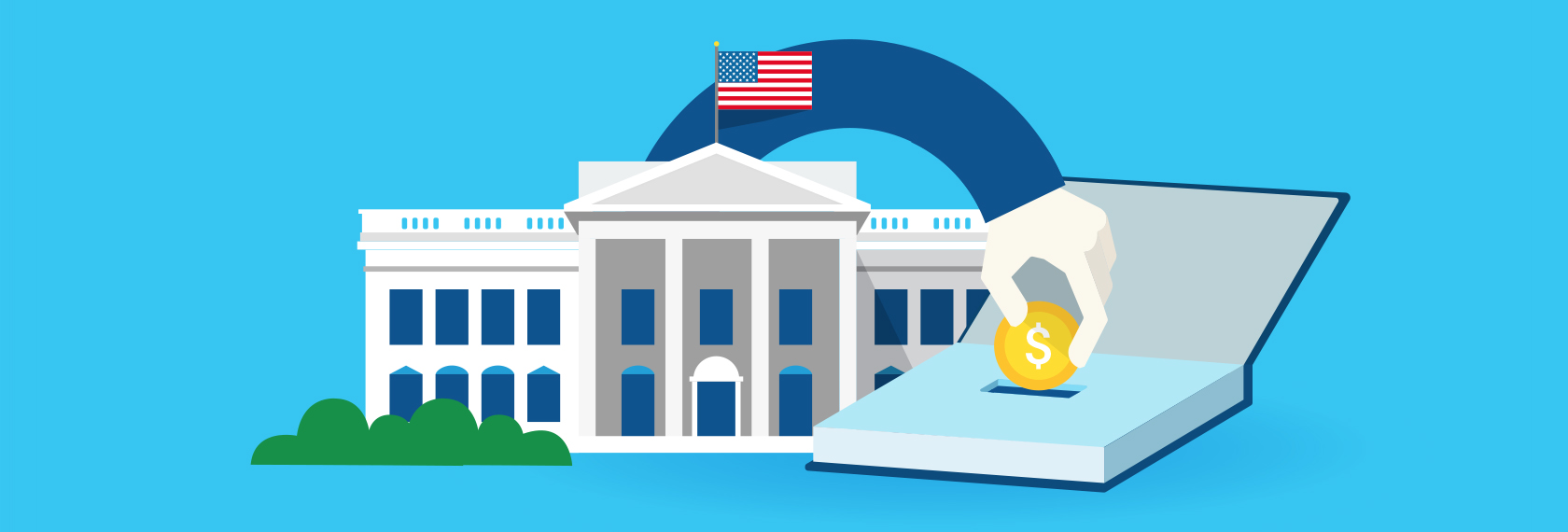What a Donald Trump Presidency Means for Student Loans
With the world’s longest election campaign season finally behind us, people across the country are trying to understand what a Donald Trump presidency means for them. If you’re one of the 40 million Americans with student loans, that means taking a closer look at President Trump’s statements about the runaway growth of college tuition and student loan debt, and his proposed plans to remedy the problems.
And if you missed our CEO Mike Cagney’s recent article in Business Insider discussing how the student loan industry will change this year, we recommend checking it out.
While the subject of student loans was not a signature issue for Trump throughout most of the campaign, prior to Election Day he introduced specific plans for student loans and higher education. His most detailed proposals came during a rally in Pennsylvania on September 22, and an October 13 speech in Ohio. Three main points emerged:
So what do we know now about Trump’s plans to assist student loan borrowers?
Going straight to the source, Trump’s website offers two statements on the topic, saying that he plans to:
Student loan repayment proposal
For federal student loans, there are already several income-based repayment programs that allow borrowers to make lower payments based upon their income, and then, after a period of time, have their remaining student loan balance forgiven. The most recent plan, Pay As You Earn (PAYE), caps monthly payments at 10% of discretionary income, and wipes the slate clean after 20 years of payments. It’s not yet clear if Trump’s proposal would only be available to new borrowers or if current borrowers would be able to switch to his plan.
Related: Save For Retirement or Pay Down Student Loans? Where Should You Focus?
Forbes contributor Preston Cooper wrote on November 10 that Trump’s plan “may seem like a tradeoff—a higher payment over a shorter period—but on net, it increases the generosity of federal loans.”
In fact, the plan is so generous that some have taken issue with the math. Forgiving loans five years earlier would cause the lender—in this case, the federal government—to miss out on a lot of interest payments, as well as forgive a lot more loans. While Trump hasn’t provided cost projections, Republicans who have worked against Obama’s income-driven repayment programs are likely to view this new plan as fiscally irresponsible.
College affordability proposal
Addressing the rising cost of college tuition on the campaign trail, Trump proposed taking away the preferential tax status enjoyed by university endowments as a means to incentivize cost controls. Wealthy universities have been feeling the heat from Congressional Republicans, as members investigate why these institutions are raising the cost of tuition while sitting on hefty, tax-deferred endowments.
Recommended: A Visual Timeline of Student Loans – Where We’ve Been and Where We’re Headed
Trump also advocated for reducing federal regulations on colleges, which would cut administrative bloat caused by complying with those regulations and enable them to pass the savings on to students via lower tuition.
Who owns student loans?
The role of the federal government in student lending has also been on Trump’s mind. In a May 13 interview with Inside Higher Ed, Sam Clovis, the Trump campaign’s national co-chair and policy director, said the loan system “should be marketplace and market driven,” shifting loan origination away from the federal government to private lenders. As with all of Trump’s student loan proposals, it remains unclear how this would take shape, let alone play out in Congress.
For now, we’ll have to wait for more concrete details. Keep an eye for articles like this one to learn how Trump might staff the Department of Education, the office that oversees student loans, which Trump has said he wants to radically shrink or eliminate altogether.




Here’s another thought…limit what students can borrow. When I went to college I was limited to what I could borrow. It was a different ear for costs but my loans were limited to $1000 per year and covered about a quarter of my costs. I had to work, save and get help from family to make ends meet. I didn’t leave school with a great deal of debt and I was able to pay it off in a timely manner. The biggest cause of excessive student debt is excessive student borrowing. Buying what you can afford starts before you are earning a regular paycheck.